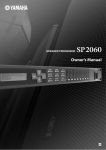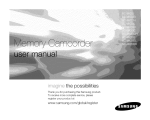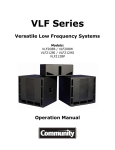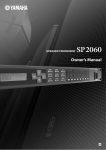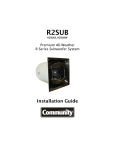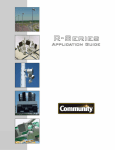Download Community
Transcript
Community processor library list V1.0 File name: *.cel for DME, *.ce2 or *.cep for TXn/Amp Editor Entasys Model File name Entasys FR, Music Entasys_FR_Music Entasys FR, Speech only Entasys_FR_Speech Entasys FR/FR, Music Entasys_FR_FR_Music Entasys FR/LF, Music Entasys_FR_LF_Music VLF208 VLF208 VLF212 VLF212 iBOX passive Model File name iHP1244 iHP1244_pa iHP1264 iHP1264_pa iHP1266 iHP1266_pa iHP1294 iHP1294_pa iHP1296 iHP1296_pa iHP1299 iHP1299_pa iHP1544 iHP1544_pa iHP1564 iHP1564_pa iHP1566 iHP1566_pa iHP1594 iHP1594_pa iHP1596 iHP1596_pa iHP1599 iHP1599_pa iHP3564 iHP3564_pa iHP3594 iHP3594_pa i2W8Mon i2W8Mon i2W8PA i2W8PA i112S i112S i115S i115S i118S i118S i212S i212S i215LVS i215LVS i215S i215S iLF218 iLF218 iBOX biamp Model File name 2010/3/23 Module 1way 1way 1way 1way 1way 1way Out# - Module 1way 1way 1way 1way 1way 1way 1way 1way 1way 1way 1way 1way 1way 1way 1way 1way 1way 1way 1way 1way 1way 1way 1way - Module iHP1244 iHP1244_bi 2way iHP1264 iHP1264_bi 2way iHP1266 iHP1266_bi 2way iHP1294 iHP1294_bi 2way iHP1296 iHP1296_bi 2way iHP1299 iHP1299_bi 2way iHP1544 iHP1544_bi 2way iHP1564 iHP1564_bi 2way iHP1566 iHP1566_bi 2way iHP1594 iHP1594_bi 2way iHP1596 iHP1596_bi 2way iHP1599 iHP1599_bi 2way iHP3564 iHP3564_bi 2way iHP3594 iHP3594_bi 2way H L H L H L H L H L H L H L H L H L H L H L H L H L H L Driver 6x3.5"+18x2.35"+42x1" 6x3.5"+18x2.35"+42x1" 6x3.5"+18x2.35"+42x1" 6x3.5" 2x8" 2x12" Driver 12"+1.4" 12"+1.4" 12"+1.4" 12"+1.4" 12"+1.4" 12"+1.4" 15"+1.4" 15"+1.4" 15"+1.4" 15"+1.4" 15"+1.4" 15"+1.4" 15"+8"+1.4" 15"+8"+1.4" 2x8"+1" 2x8"+1" 12" 15" 18" 2x12" 2x15" 2x15" 2x18" Driver 1.4" 12" 1.4" 12" 1.4" 12" 1.4" 12" 1.4" 12" 1.4" 12" 1.4" 15" 1.4" 15" 1.4" 15" 1.4" 15" 1.4" 15" 1.4" 15" 8"+1.4" 15" 8"+1.4" 15" VLF Model VLF208 VLF212 File name VLF208 VLF212 Module 1way 1way Driver - 2x8" - 2x12" Model Cloud 6 Cloud 1266 Cloud 1299 Cloud 1266T Cloud 1299T Cloud 12SUB CLOUD File name Cloud6 Cloud1266 Cloud1299 Cloud1266T Cloud1299T Cloud12SUB Module 1way 1way 1way 1way 1way 1way - Driver 6"+3/4" 12"+1" 12"+1" 12"+1" 12"+1" 12" R Model R2-52Z R2-77Z R2-94Z R.25-94Z R.25PA R.5-66Z R.5-94Z R.5-99Z R.5COAX99 R.5HP R.5-SUB R2SUBDF R2SUBZ RMG200A RSH-462 File name R2-52Z R2-77Z R2-94Z R25-94Z R25PA R5-66Z R5-94Z R5-99Z R5COAX99 R5HP R5-SUB R2SUBDF R2SUBZ RMG200A RSH-462 Module 1way 1way 1way 1way 1way 1way 1way 1way 1way 1way 1way 1way 1way 1way 1way R6-51 Biamp R6-51_bi 2way R6-Basshorn 1way Model R6-Basshorn M Class File name M12 Biamp M12_bi 2way M12 Passive MX41E M12_pa MX41E 1way 1way Model S1296 S1296M S1596 S3294 S3594 S215S S218S File name S1296 S1296M S1596 S3294 S3594 S215S S218S H L - Driver 2x12"+2x2"+1" 2x12"+2x2"+1" 2x12"+2x2"+1" 8"+3/4" 8"+3/4" 12"+1" 12"+1" 12"+1" 12"+1" 12"+2"+1" 12" 2x12" 2x12" 2" 4x2" 6x2"+6x1" 6x12" 6x12" H L - Driver 2" 12" 12"+2" 12"+1" Module S Model Veris 6 Veris 8 Veris 26 Veris 28 Veris 1264 Veris 1296 Veris 1564 Veris 1596 Veris 3264 Veris 3294 Veris 3564 Veris 3594 Veris 210S Veris 212S Model Veris File name Veris6 Veris8 Veris26 Veris28 Veris1264 Veris1296 Veris1564 Veris1596 Veris3264 Veris3294 Veris3564 Veris3594 Veris210S Veris212S WET (WET2) File name Module 1way 1way 1way 1way 1way 1way 1way - Driver 12"+1" 12"+1" 15"+1" 12"+6.5"+1" 15"+6.5"+1" 2x15" 2x18" Module 1way 1way 1way 1way 1way 1way 1way 1way 1way 1way 1way 1way 1way 1way - Driver 6"+3/4" 8"+3/4" 2x6"+3/4" 2x8"+3/4" 12"+1" 12"+1" 15"+1" 15"+1" 12"+6.5"+1" 12"+6.5"+1" 15"+6.5"+1" 15"+6.5"+1" 2x10" 2x12" Module 322-64 322-64_bi 2way 322-94 322-94_bi 2way 315-64 315-64_bi 2way H L H L H L Driver 2.8"+1" 2x12" 2.8"+1" 2x12" 2"+1" 15" Solution Model SLS915 SLS918 SLS920 SLS960 SLS980 SBS22 SBS25 SBS45 File name SLS915_pa SLS918_pa SLS920_pa SLS960_pa SLS980_pa SBS22 SBS25 SBS45 Module 1way 1way 1way 1way 1way 1way 1way 1way - Driver 2x6.5"+1" 12"+2x6.5"+1" 2x8"+2"+1" 2x10"+2"+1" 15"+2"+1" 2x12" 2x15" 4x15" Instructions for DME / SP2060 / DME Designer Saving the Library Data Decompress the folder and then copy it into the Amp Editor Library folder as explained below. When proceeding, be careful not to overwrite any of your own library data. 1. Open the DME Library folder Windows XP/2000: \\Program Files\YAMAHA\OPT Tools\DME Designer\Library\SpeakerProcessor\Speaker Processor 1 Way Windows Vista: \\Public\Public Documents\YAMAHA\DME Designer\Library\SpeakerProcessor\Speaker Processor 1 Way 2. Copy to the appropriate folder Copy the needed folder from the decompressed "Speaker Processor 1 Way" folder into the "\SpeakerProcessor\Speaker Processor 1 Way" folder of the DME Designer Library. Repeat the same procedure for 2 Way or 3 Way speaker processor libraries. DME Designer version 3 or later automatically generates the Speaker Processor 1 Way to 3Way folder within the Library folder. 3. Save 4-way systems data When saving libraries for 4-way (or more) systems, store the library from DME Designer first. This will automatically create an appropriate folder (for example "Speaker Processor 4 Way"). For information about how to save library data into the SP2060 unit, refer to the section entitled "SP2060 Library Manager" within the DME Designer Manual. Library File names Library file names are as follows: "model name"_"drive mode"_"subwoofer use"or"floor-monitor use".cel. "_pa": Passive mode "_bi": Bi-amped mode "_tri": Tri-amped mode "_sub": Full-range speaker settings, when used in combination with subwoofer "+subwoofer model": Combination of specific full range and subwoofer "_moni": Settings for use as floor monitor. Example: IF211595_bi_sub.cel This file is a library which drives the IF2115/95 in bi-amp mode, and a sub-woofer. (you should also recall a library for your subwoofer respectively). Limiter settings Default threshold levels were calculated from Noise (Continuous) power [W] and nominal impedance [Ω] (with the exceptions of a few models), and set on the assumption of a maximum processor output level of +24dBu (SP2060 and DME24N) and an amp voltage gain of 26dB (Tn or XP series amp set to 26dB gain with ATT 0dB; or 32 dB gain PC-1N or P series amp with ATT -6dB). If you are using a setup that does not match these settings, change the threshold levels accordingly. Example 1: If you are using the +18dBu MY8-DA96 card in the DME64/24N, raise the threshold by 6dB. Example 2: If you are using an amp with 32dB gain and with ATT set to 0dB, drop the threshold by 6dB. Attack time and release time were set as below. Attack auto Mid = HPF wave length * 1/2 Release auto Mid = Attack time *16 Note: The use of a limiter does not guarantee the protection of your speakers! The use of recommended limiters should be considered only the first step toward protecting your system. Subwoofer Polarity, Positioning and Level Normal polarity is appropriate where the subwoofer and full-range speakers are equidistant from the listening point. In this case, the phase match will boost the bass level in the crossover range. If the subwoofer and full-range speakers are not equally distant from the listening point, however, then you may find that you get stronger bass-range energy and better results by reversing the polarity. Try using both normal and reverse polarities, and then select the one which provides the best sound measurements or subjective results at the listening point. Note that the level required from the subwoofer will vary according to the application, the equipment mix, and the number of units. Set the level to get the best result for your particular application and setup. Also Note... Set the power amp's HPF and LPF switches off. Also set YS Processing off (if using the Yamaha P series). This library data was created using the SP2060 (Fs=96KHz). Instructions for TXn / Amp Editor Saving the Library Data Decompress the folder and then copy it into the Amp Editor Library folder as explained below. When proceeding, be careful not to overwrite any of your own library data. 1. Open the Amp Editor Library folder \\Program Files\YAMAHA\Amp Editor\V1.x\Library\SpeakerProcessor\Speaker Processor 1 Way *_\V1.x\must be replaced by corresponding software version of your Amp Editor 2. Copy to the appropriate folder Copy the needed folder from the decompressed folder into the "\Speaker Processor 1 Way" folder of the Amp Editor. For information about how to save library data into the TXn unit, refer to the section entitled "Speaker Processor Library Manager" within the Amp Editor Manual Library File names Library file names are as follows: "model name"_"drive mode"_"subwoofer use"_"frequency".cel2. "_pa": Passive mode "_bi": Bi-amped mode "_tri": Tri-amped mode "_sub": Full-range speaker settings, when used in combination with subwoofer "+subwoofer model": Combination of specific full range and subwoofer "_moni": Settings for use as floor monitor. "_H": HF channel. (In descending order of frequency: H, H-M, M, M-L, L, S-L. H=High, M=Mid, L=Low, S=Sub) Example: IF211595_bi_sub_L.cel This file is a library which drives the IF2115/95 in bi-amp mode, with a sub-woofer, LF channel (you should also recall a library for your subwoofer and HF channel respectively). Limiter settings Default threshold levels were calculated from Noise (Continuous) power [W] and nominal impedance [Ω] (with the exceptions of a few models). Attack time and release time are as below. Attack auto Mid = HPF wave length * 1/2 Release auto Mid = Attack time *16 The limiter within the Speaker Processor is applied in the signal chain before the attenuator. This means that if the attenuator level is lowered, the limiter will apply at a lower output level. The TXn has separate Voltage Limiters and Power Limiters with independent settings not included in this library data. These limiters are applied at the last stage of the amplifier, after the attenuator. Note: The use of a limiter does not guarantee the protection of your speakers! The use of recommended limiters should be considered only the first step toward protecting your system. Subwoofer Polarity, Positioning and Level Normal polarity is appropriate where the subwoofer and full-range speakers are equidistant from the listening point. In this case, the phase match will boost the bass level in the crossover range. If the subwoofer and full-range speakers are not equally distant from the listening point, however, then you may find that you get stronger bass-range energy and better results by reversing the polarity. Try using both normal and reverse polarities, and then select the one which provides the best sound measurements or subjective results at the listening point. Note that the level required from the subwoofer will vary according to the application, the equipment mix, and the number of units. Set the level to get the best result for your particular application and setup. Also Note... Data in this Library were originally made in DME format using the SP2060 processor (Fs 96kHz). They have been converted for use with Amp Editor and TXn amplifiers.




